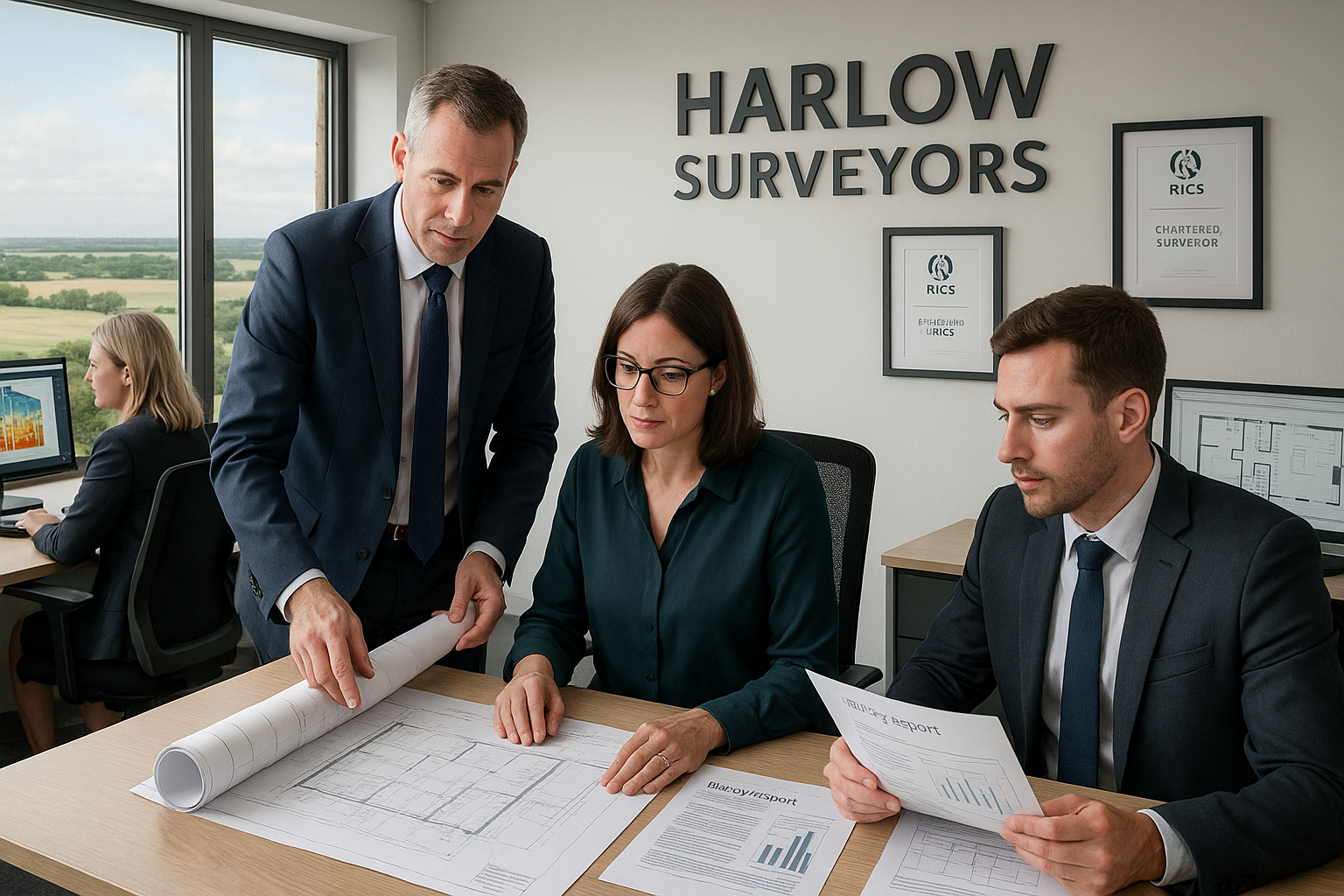
RICS chartered surveyors explaining survey options to clients
Choosing the right property survey is one of the most important decisions you'll make when buying a home in Essex. As RICS chartered surveyors serving Harlow and surrounding areas, we help clients understand the differences between survey levels every day.
The wrong survey choice can leave you unaware of serious defects, while over-surveying can unnecessarily increase your costs. Here's everything you need to know about RICS Level 2 and Level 3 surveys to make the right decision for your Essex property purchase.
Understanding RICS Survey Levels
The Royal Institution of Chartered Surveyors (RICS) has standardized property surveys into three main levels:
- Level 1: Condition Report (basic assessment)
- Level 2: HomeBuyer Report (most popular choice)
- Level 3: Building Survey (comprehensive assessment)
For most property purchases in Essex, the choice comes down to Level 2 vs Level 3 surveys. Let's explore both in detail.
RICS Level 2: HomeBuyer Report
What's Included
A Level 2 HomeBuyer Report provides:
- Visual inspection of accessible areas
- Traffic light rating system (Green, Amber, Red)
- Market valuation and insurance reinstatement figure
- Urgent defects requiring immediate attention
- Significant issues affecting value or requiring repair
- Legal and environmental issues to investigate
Level 2 Benefits
- Cost-effective for most properties
- Includes market valuation
- Easy-to-understand traffic light system
- Suitable for conventional properties
- Faster turnaround time
Limitations of Level 2
- Non-invasive inspection: No lifting of floorboards or moving furniture
- Limited access: Won't access roof spaces or basements if unsafe
- Surface-level assessment: May miss hidden defects
- Less detailed advice: General rather than specific recommendations
Best For
Level 2 surveys are ideal for:
- Conventional properties built after 1900
- Properties in good apparent condition
- Standard construction methods and materials
- Properties without obvious defects
- Buyers wanting cost-effective reassurance
RICS Level 3: Building Survey
What's Included
A Level 3 Building Survey provides:
- Comprehensive inspection of all accessible areas
- Detailed condition assessment of all building elements
- Construction methods and materials analysis
- Defect explanations with causes and implications
- Repair priorities and cost estimates
- Maintenance advice and future planning
- Technical details for serious issues
Level 3 Advantages
- Most comprehensive inspection available
- Detailed technical analysis
- Specific repair recommendations
- Cost estimates for major works
- Future maintenance planning
- Suitable for all property types
Best For
Level 3 surveys are essential for:
- Period properties (pre-1900)
- Properties with known defects
- Unusual construction methods
- Previously extended or altered properties
- Properties you plan to renovate
- High-value properties
- Properties with suspected issues
Cost Comparison
Typical Survey Costs in Essex (2025):
Level 2 HomeBuyer Report:
- 1-bed flat: £400-£500
- 2-bed house: £450-£600
- 3-bed house: £500-£700
- 4-bed house: £600-£800
Level 3 Building Survey:
- 1-bed flat: £600-£800
- 2-bed house: £700-£950
- 3-bed house: £800-£1,200
- 4-bed house: £1,000-£1,500
Decision Matrix: Which Survey Do I Need?
| Property Characteristic | Level 2 | Level 3 |
|---|---|---|
| Built after 1900 | ✓ | ✓ |
| Victorian or older | - | ✓ |
| Standard construction | ✓ | ✓ |
| Unusual construction | - | ✓ |
| Good apparent condition | ✓ | ✓ |
| Visible defects | - | ✓ |
| Planning renovations | - | ✓ |
| First-time buyer | ✓ | ✓ |
Essex Property Considerations
Harlow New Town Properties
Many Harlow properties were built during the new town development (1947-1980s). These often feature:
- Non-traditional construction methods
- Flat roofs and concrete panels
- System-built construction
Recommendation: Level 3 survey for non-traditional construction
Victorian Terraces
Common throughout Essex, featuring:
- Solid wall construction
- Slate roofs and sash windows
- Potential damp and structural issues
Recommendation: Level 3 survey essential
Modern Developments
Post-1980 properties with:
- Cavity wall construction
- NHBC warranties (if under 10 years)
- Modern building standards
Recommendation: Level 2 usually sufficient
Making Your Decision
Expert Tip
When in doubt, choose Level 3. The additional cost is minimal compared to the potential cost of missing a serious defect. It's better to over-survey than under-survey.
Questions to Ask Yourself
- Is this a significant financial investment for me?
- Am I comfortable with some uncertainty about the property's condition?
- Do I have contingency funds for unexpected repairs?
- Is the property obviously in good condition?
- Am I planning any renovation work?
What Happens After the Survey?
Regardless of survey level, our RICS surveyors provide:
- Detailed written reports within 48 hours
- Follow-up consultations to explain findings
- Specialist referrals if required
- Negotiation support based on findings
- Insurance assistance for any defects found
Conclusion
The choice between Level 2 and Level 3 surveys depends on your property type, budget, and risk tolerance. Level 2 works well for modern, conventional properties in good condition, while Level 3 is essential for older, unusual, or problematic properties.
Remember, a survey is an insurance policy against costly surprises. The cost of the survey is minimal compared to the potential cost of undiscovered defects.
Need Help Choosing the Right Survey?
Our RICS chartered surveyors can advise on the best survey type for your Essex property.
Get Expert Survey Advice
James Mitchell MRICS
Senior Partner & Chartered Surveyor at Harlow Surveyors with extensive experience helping clients choose the right survey type for their property purchases across Essex.